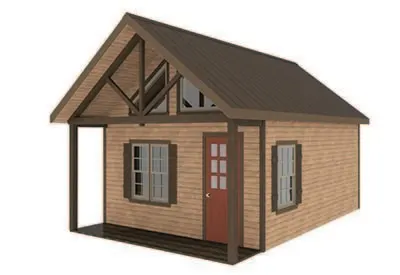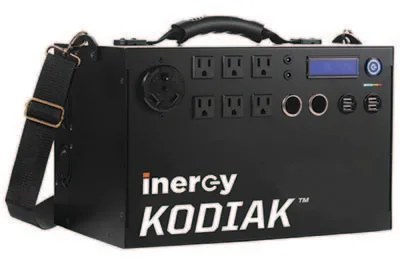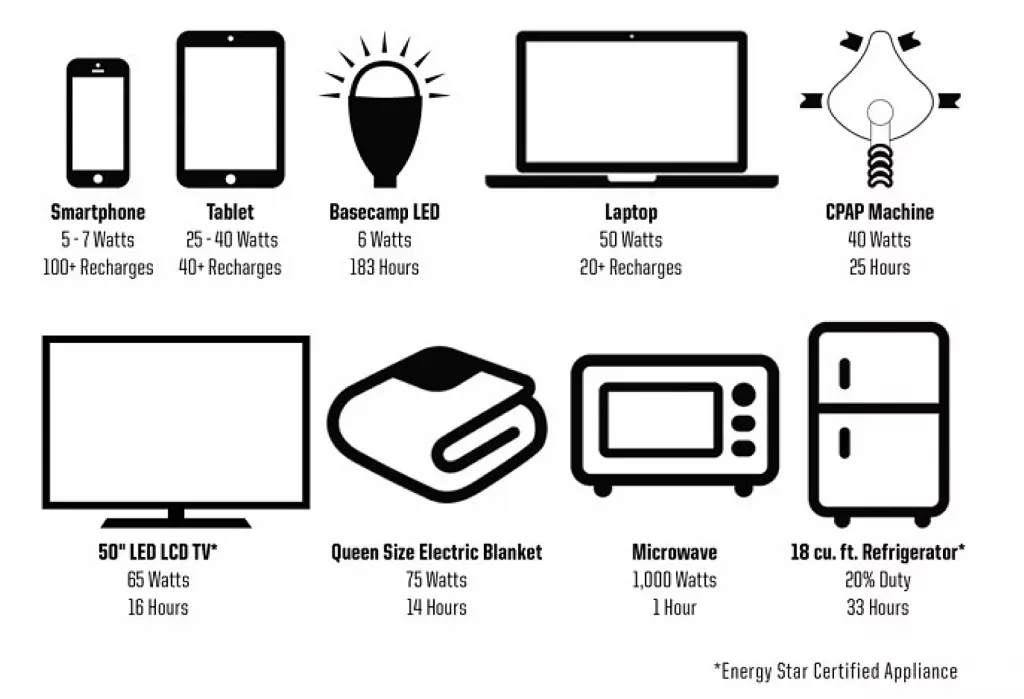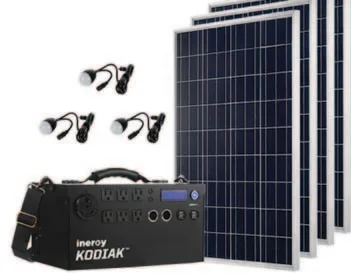I don’t think we could be more excited about the solar powered generator system we chose to power our off-grid cabin project at the farm! (See : Off Grid Cabin Project)
We researched a slew of options: wind, solar, propane – even gas and diesel generators. At the top of the wish list were that the system be clean, quiet, reliable and affordable.
And, if at all possible, renewable. Of course, the quiet and renewable options eliminated the gas and diesel options early on.
We knew with its small 16′ x 20′ footprint, the cabin wouldn’t require a huge, complicated system.
However, it had to be powerful enough to provide plenty of juice for LED lighting, a ceiling fan, television, and small appliances.
We also wanted the system to be able to power and charge computers, tablets and cell phones.
The Answer – The Inergy Kodiak Solar Powered Generator
As we looked for the ultimate solution, one of our good friends at Weaver Barns let us know about a solar powered generator called the Kodiak.
The Kodiak, created by an Idaho based company called Inergy, is an incredibly powerful and unique solar generator. It is also simple to set up – a big plus for our DIY off-grid cabin project.
Weaver will be installing a Kodiak in their own model cabin project for the upcoming Cleveland Home and Garden Show in January.
They also thought it might just be the perfect answer for powering our little off-grid cabin as well. And were they ever right!
The more we researched the Kodiak, the more we knew it was the perfect power system for us. It met all of our basic power requirements, and then some.
As you will see below, the Kodiak has plenty of juice to power our off-grid cabin with ease. But its portability feature will also let us provide power to the farm where we never could before.
At 14″ wide x 7″ high x 8″ deep and weighing just 20 pounds, the power pack generator will be easy to unhook from the cabin and use anywhere temporary power is needed. Areas like the barn, fire-pit area, garden, chicken coop and more.
We can even take the power pack on the road for camping, tailgating, or outdoor events. Maybe best of all, it can and will serve as emergency back-up power for the house.
How We Will Install The Kodiak Solar Generator System To Power The Cabin
We will wire the cabin so that lights, switches, and a few outlets can run off of a small electric panel.
The Kodiak will simply plug into the panel to power it up. When fully charged, it will supply 1,100 watt hours and 90 Amp hours of power with its lithium battery.
You can see by the chart to the right that it will be more than enough to power a stay at the cabin. And with a battery life expectancy of 2000 cycles, it should be enough to power our cabin and farm for 10 years.
If we ever need more power, the Kodiak also allows for deep cycle or traditional lead batteries to be added. Early next year, they will also release an extra lithium add-on battery to double the capacity.
To charge the batteries, we are installing (4) 100 Watt Polycrystalline solar panels to the roof of the cabin.
Together, they can recharge the Kodiak in about 4 hours. The Kodiak can handle up to 6 panels to recharge in just 2 hours. For us, 4 panels and a 4 hour recharge is more than enough.
The panels connect together with a simple plug in. They then connect via plug to the Kodiak to charge.
This simple set-up will make installation to the cabin a breeze. I think what I love most about the system is it can easily be recharged with just a single panel anywhere in 15 to 17 hours.
Perfect to power any outdoor shed, building, or for any kind of remote or emergency use. You can also charge with a plug in wall charger too.
The Cost
Most all of the solar kits we found came in at a cost of $3,000 to $5,000 and up – and required extensive battery hookups.
This system will be a huge savings over a traditional solar panel and battery set-up. Not to mention, way more simple to install and maintain over the long haul!
The Kodiak generator runs $1599, while the panels are $175 each. Even better, that price includes all of the cables needed.
Add in that it will not only power our cabin – but we can use all over the farm and as an emergency back up power to the house – it’s perfect!
Next step for us – getting the cabin up in the next few weeks, and panels and power plugged in! We will keep you updated on all.
We even have plans for a few video tutorials on the solar installation. Our hopes are to have the cabin up in the first few weeks of the new year, with the panels on as soon as the roof is on.
We are really proud to partner with Inergy, and their dealer Innovia Products to power our off-grid cabin project. You can find out more about their entire solar line at : innoviaproducts.com.
Here’s to living off grid in style! Jim and Mary. To receive our 3 Home, Garden, Recipe and Simple Life articles each week, sign up for our free email list. You can also follow us on Facebook, Twitter, Pinterest, or Instagram. This article may contain affiliate links.




